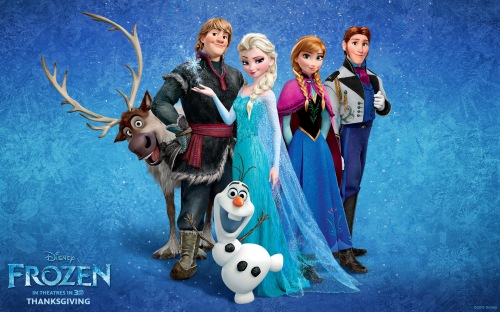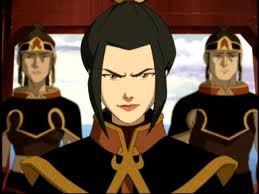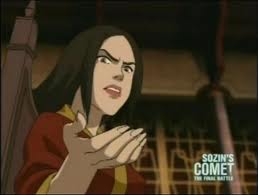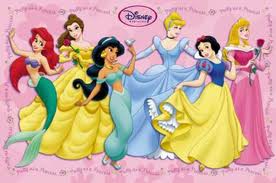A conversation between two Disney employees ensues.
Employee 1: “Hey.”
Employee 2: “Yeah?”
Employee 1: “I want some more money. We should make a new movie. …What’s with that look? Don’t you want money?”
Employee 2: “Well, yeah. I want money, but doesn’t making a movie require…you know, a lot of effort? Besides, what if we create a whole story, all-new characters, spend all that time on it, and nobody buys it?”
Employee 1: “Relax! I’ve got it all figured out. We’ll create an unneeded sequel to one of our classics. It’ll save us a lot of effort and make a lot of money; people always buy those things.”
Employee 2: “Hey, that’s brilliant! And here’s an idea! What if we create a sequel to that Mulan movie?”
Employee 1: “Mulan, mulan…is that one of those movies about talking horses?”
Employee 2: “No, it’s about a girl in ancient China who disguises herself as a man and goes into the army.”
Employee 1: “Oh.”
Employee 2: “Anyway, it’s never sat right with me. It just doesn’t go with any of our other movies with female leads. I mean, the girl doesn’t even get married at the end, for Pete’s sake! How do we even categorize a movie like that? So, how about we fix that in a sequel?”
Employee 1: “And marry off one of the only independent female leads Disney has ever had? …Sounds great!”
This is the conversation I imagine took place just before the making of Mulan II. Ever since it was released in 2004 this movie has been a large thorn in my side, lodged deep in my skin. I can almost forget it’s there until Mulan-anything is mentioned. Then, there it is again, annoying as ever. Let me start from the beginning.
 I adored Mulan as a child; I sill do, in fact. In a world filled to the brim with pathetic role models for girls (and women), Mulan was the shining ray of hope amongst the darkness that is Barbie, Bratz, and any Disney princess movies. I could watch Mulan over and over, relishing Mulan’s strength (physically and mentally), courage, and above all else, independence. Mulan’s story is all about self-discovery and accepting one’s self and for Mulan, that meant being independent. She took control of
I adored Mulan as a child; I sill do, in fact. In a world filled to the brim with pathetic role models for girls (and women), Mulan was the shining ray of hope amongst the darkness that is Barbie, Bratz, and any Disney princess movies. I could watch Mulan over and over, relishing Mulan’s strength (physically and mentally), courage, and above all else, independence. Mulan’s story is all about self-discovery and accepting one’s self and for Mulan, that meant being independent. She took control of her own life while showing women could do anything men could do, that one’s gender shouldn’t be a restriction. Furthermore, while the story is chalk-full of male characters, there is only a hint of romance, no wedding bells (the signal of conformation as a “true,” full-filled woman in Disney), and there is truly a partnership between Mulan and her fellow male cast, including the guy she likes. How’s that for a role model?
her own life while showing women could do anything men could do, that one’s gender shouldn’t be a restriction. Furthermore, while the story is chalk-full of male characters, there is only a hint of romance, no wedding bells (the signal of conformation as a “true,” full-filled woman in Disney), and there is truly a partnership between Mulan and her fellow male cast, including the guy she likes. How’s that for a role model?
Disney, however, seemed confounded on that particular issue. Even before the never-should-have-even-been-thought-of Mulan II, Mulan was almost consistently represented as the pretty young woman going to see the match-maker. Mulan merchandise consisted mostly of beautiful Mulan dolls with painted faces and extravagant robes and while searching “mulan costume” does yield some soldier-Mulan costumes, I don’t believe any of them are made or sold by Disney. Yeah, Mulan looks very pretty in that dress, but wasn’t one of the big points of the movie that Mulan was more than a pretty face? It reminds me of video game companies trying to appeal to girls/women; if it’s got to do with girls make it pink, frilly, and pretty.
Mulan is also presented as a Disney princess. F.Y.I. Disney, last time I checked Mulan wasn’t a princess so, here’s my question: why must every (human) female lead be grouped with the princesses? Because of our culture’s stereotypical view of princesses, by placing her with the princesses, it’s like screaming “THIS IS A GIRL’S MOVIE! ONLY GIRLS WOULD BE INTERESTED!” Of course! The movie is all about a girl so, obviously it’s a chick-flick! Not. Girls watch/read movies/books about male protagonists all the time so why is it that so often when movies/books feature a female lead, it’s automatically a girl’s movie? Boys could like Mulan just as much as girls. Disney just can’t seem to let it go.

Now you know what to avoid.
The other thing Disney just can’t seem to let go of is the opportunity to make sequels-sequels that should never have existed. In the case of making sequels, Disney is like that dog that, no matter how many times you tell it “no” or “leave it,” feels a certain compulsion to go after that dead squirrel in the backyard. It’s a gross fixation that usually ends up just as stinky (with some exceptions). They go back to dig up classics and give beloved protagonists kids (The Little Mermaid II, Lady and the Tramp II, The Lion King II, Return to Neverland), generally add stories that never need to be told (Tarzan II, Bambi II, The Lion King 1 1/2), and, of course, marry off previously independent leads. Enter the hated Mulan II.
Frankly, I don’t like even thinking about the content of Mulan II; I like to pretend it doesn’t even exist. (So far, my denial of reality doesn’t appear to be working so, I’m hoping this rant will be like some kind of therapy. Some day, I hope to move past this trauma.) So, Mulan II goes like this: Mulan and Shang have been abducted and replaced by shallow shadows of themselves (ok, I made that up). They want to tie the knot, but they’re dealing with the usual relationship issues. (“I told you we should have stopped for directions, Shang! Jeez, Mulan! I know what I’m doing! Just because you saved all of China doesn’t make you smarter than me!”) Mushu, for his own reasons, wants to break the couple up. Let’s pause here for a moment. Did Disney really make Mulan, a story that went beyond the normal blah of stereotypical romances, into a superficial romance? Now the uniqueness of the original has been replaced by outsiders trying to break up the couple that’s “meant to be” for their one selfish reasons. What’s next? Mulan and Shang will be breaking up and getting back together in some strange accordion fashion? Not far from it.

The new Mulan.
Then there’s a sorry story about Mulan’s friends Yao, Ling, and Chien-Po finding their ideal women in three princesses (Disney can’t resist). Oh yeah, and then there was some stuff about playing bodyguard and political alliances (oooh, so that’s why those princesses were there!). Mostly, Mulan II is a romance with a side dish of action, the polar opposite of the original. The sophistication of Mulan was also replaced by a certain shallowness, a mere trifle. In The Art of Mulan, the animator of the character Mulan, Mark Henn, is quoted as saying the original movie was “‘really a story about a father and daughter and honor–not girl meets boy and they live happily ever after.'” Oh, what must he have thought at seeing Mulan II? Bottom line: Disney should leave dead squirrels where they lie and let the world enjoy a truly independent female lead.

The real Mulan.
Read Full Post »

































